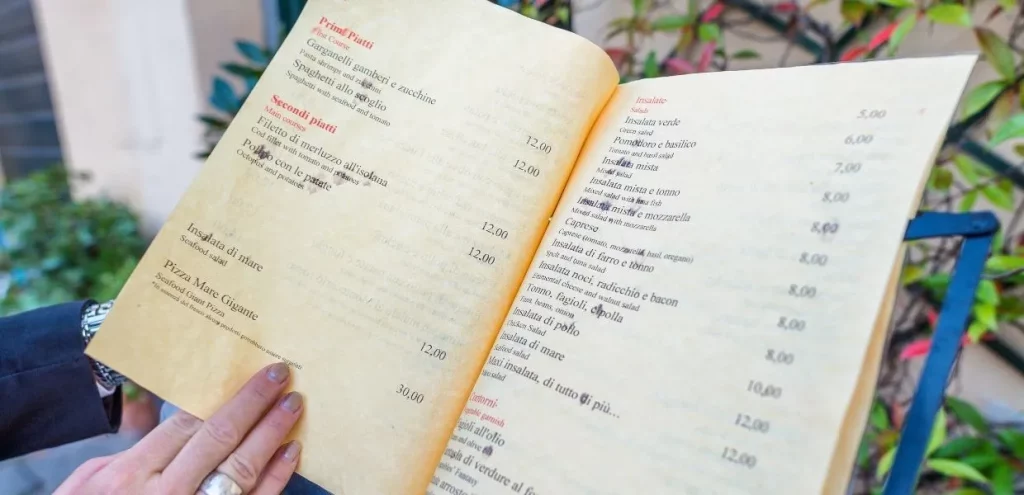All Articles
How to Open a Restaurant

One of the most competitive industries is the restaurant industry. Rumor in the restaurant industry is that 60% of restaurants fail in their first year, and 80% don’t make it past their fifth year. A study done on restaurants shows that the failure rate is at most 30% in the first year. Be that as it may, we all know that there are many restaurants, which means fierce competition, which further means higher failure rates. Why do I tell you that? This is not to discourage you but to help you realize that if you want to begin opening a restaurant, you must be prepared and know beforehand what to do because now there is no more time for experiments. This article may be beneficial for you as a starting point because you will find here a list with all the essential steps you must follow to be sure you start on the right foot.
1. Choose a Concept for Your Restaurant
What is a concept? In short, it is a simple proposition or idea that describes your restaurant. It is more than just the type of restaurant you choose. What’s more important in selecting a concept is to find one that helps you differentiate from the others. Many restaurants exist; if you cannot find a different concept, your restaurant will be “yet another restaurant.” This, of course, increases the chances of failure. But suppose you see something that is different, appealing to customers, or gives your restaurant a valuable USP (Unique Selling Proposition) that can be used further in marketing. In that case, there are better chances of success.
Here are some examples of restaurant concepts:
- A London steakhouse
- An Italian fine-dining restaurant
- A fast-food restaurant with giant burgers
- A vegan restaurant that produces its ingredients on farms
You must be aware that after choosing a concept for your restaurant, everything needs to revolve around that concept. If, for example, you have thought about opening a fast-food restaurant that sells giant burgers, especially to big groups of people, be sure that the decor, the employees, the space, and even the logo will tell the story: “Here is a place where you can eat giant burgers with your friends.”
2. Create a Business Plan
Think for a moment about a trip you want to take. Well, if you want to make the most of it, there are some questions you must ask yourself before going anywhere. You want to know what places you could visit, the fees to enter different places, how much money you have to spend on accommodation and food, you may want to take some cash with you and not rely entirely on your card, and many other things.
The same idea applies to restaurant openings, but the stakes are higher. If you do not have a trip plan, the worst case is you’ll miss a beautiful place, not have enough money to stay one more day, or pay for food much more than you expected. However, you can lose your business if you do not have a business plan. Here is what a business plan must include:
- Executive summary—Summarize your business plan. You can write a sketch at first, but remember to refine this summary after you have finished the business plan.
- Company overview—Describe the restaurant you want to open and the type of service you’ll offer; give it a name, and write your unique selling proposition. Here, you can add anything that helps people understand your restaurant, even a menu sample.
- Target market—You must ask yourself and answer who you want your customers to be. Do you want more families in your restaurant? Are you aiming to attract more of the younger generation?
- Location—It is crucial to consider where to place your restaurant. This choice influences most aspects of your restaurant’s success. Consider the location of your restaurant with an eye on your target market and its accessibility.
- Competition—Before starting your restaurant, it is essential to know who you are competing with. Do your homework and look at the restaurants in your surrounding area to learn how to differentiate from them and surpass them.
- Staff—You must consider each operation in your restaurant to get an idea of the kind of people you need to hire. Not everything in a restaurant is about preparing and serving food. You must take care of laundry, cleaning, waiters, etc. So, think about each process.
- Financial analysis—These questions must be answered in an economic analysis: How much money can you invest in the restaurant? How do you plan to get more money? What must you invest in (Payrolls, tools, furniture, etc.)? When do you think you will reach the break-even point, and how? You must make some forecasts and calculations.
- Marketing—You are new in the industry, so how will people know about your existence? Word of mouth, social media advertising, flyers left at the doors, partnerships with social media influencers? It depends greatly on the target market, so find the way that fits you.
3. Obtain the Funding You Need

Money is one of the most important things when opening a restaurant, if not the most important one. You cannot open a restaurant and run it without money. But most people cannot fund a restaurant opening alone, so what is to be done?
The first step was already anticipated in the business plan. You must do a simple calculation that includes everything you must pay for (location, food ingredients, tableware, furniture, cleaning, payrolls, renovation, equipment reparations, licenses and permits fees, taxes, etc.). After you have estimated your startup costs, the second step is to look at your funding possibilities and apply. Here are some of these possibilities:
- Crowdfunding—Many people have started by sharing their dreams with their family and relatives, who contributed significantly to the startup costs. This is a good place to start. You can also use online fundraising platforms such as GoFundMe.
- Investors—Another way to obtain funding is through investors. This is one situation where your business plan becomes invaluable. It helps investors get a general idea of your business, especially the financial analysis, and see if it is worth investing in. So make sure the business plan is well-documented and look for investors who are interested in investing in the restaurant industry.
- Commercial Loans—For a commercial loan, you must go straight to the banks and discuss the interest rates and how much capital you can get. Be aware that in commercial loans, you must provide collateral and prove you can pay the interest rates.
- Lines of Credit—A business line of credit functions similarly to a credit card. You will get the maximum amount of money you can spend each month. The most significant benefit of a business line of credit is that the interest rate only accumulates if you use the money.
- Equipment Financing—This is a financing possibility specifically for restaurant equipment such as point-of-sale technology, furniture, flatware, commercial kitchen appliances, etc. In this case, the collateral is the equipment you buy, so there is likely no need for something else. You just need to pay the interest rate each month at a specified due date.
- SBA Loans—The United States Small Business Administration is another option for obtaining the funding you need to open your restaurant. They usually lend money to people who already have some experience in the industry they want to enter. To apply for an SBA Loan, collateral is required. There is a lot of paperwork, and you must know that the process can take up to several months.
4. Choose Your Restaurant Location and Plan the Layout
Once you have the money necessary to continue the opening process, the next step is to look for a location. Whether you want to build, buy, or lease a commercial space is unimportant; it usually depends on how much money you can invest. The crucial question is where your location will be, and here are some aspects you must consider when answering this question:
- Choose an area where many people you consider target customers are present.
- Check if the site size is what you need to make your concept come alive.
- It is always a good practice to check the history of the location before buying or leasing it, especially if it was also used as a restaurant. Why did people leave it?
- If the location already has functional equipment for your restaurant, it will help you save some money.
- Look for a visible and accessible location. You don’t want a location that hardly anyone can reach.
- Make sure the location you choose is compliant with the local regulations.
- Another important aspect you must be aware of is who your competitors are. Is the area saturated with restaurants? Do you have a real opportunity to stand out amongst them?
After you choose where your restaurant will be located, you have to plan how it will look. Not all restaurant types are the same, but most restaurants are divided into two areas: front-of-house and back-of-house.
The front-of-house is that part of a restaurant that is visible and accessible to the customers. We all know that the first impression matters, so ensure that this area of your restaurant makes an astounding impression. Pick comfortable furniture, ensure the place is always clean, create an inviting atmosphere with lights, music, and art, ensure enough seating capacity for the guests you expect to serve, and make clear pathways for your staff to serve your guests efficiently. Above all, remember that everything you do in this area must align with your concept, even how you place the tables.
The back-of-house is simply the kitchen. Two things are the most important here: maneuvrability and cleanliness. With all the cooking, the appliances, and the people who prepare and serve the food, it is easy to make a mess of things. Ensure separate spaces are designated for each process in the kitchen and that the staff has enough space to move quickly and avoid accidents. Usually, these are the spaces in the back-of-house: a storage space, a cooking space, a warewashing space, a space for food preparation, and a place for plating.
5. Create The Menu

We have reached the part of the process that is perhaps the central part of a restaurant. Eventually, the food is what makes a restaurant a restaurant, so your menu must be crafted to represent your restaurant and especially the concept you have chosen.
The menu greatly influences the experience of your customers in the restaurant. Although it may seem exaggerated, the menu, especially its appearance, has the power to attract or repel customers. Because of this, you have to be very careful and thorough when creating the menu. Below are some ideas that could help you in this process:
- Create a table of contents at the beginning of the menu. People usually know what they want to eat, and a table of contents would be beneficial for finding all the information about a dish as fast as possible. However, if they do not know what to eat, a table of contents still helps them navigate the menu easily.
- A table of contents is incomplete without headings, subheadings, and other elements that help you group similar items or dishes into categories.
- You must pay attention to the menu design. If you choose to add images to the dishes on the menu, make sure that these are qualitative images. Look for a professional food photographer. If you decide not to add pictures and want a more simple and elegant menu, looking for a graphic designer might be a good idea.
- If your menu must change over time and you do not want to spend money on a printed menu, consider a QR menu.
6. Obtain the Licenses and Permits Needed
Because the licenses and permits you need to open a restaurant depend primarily on the city and state where you want to operate, the best way to find out which are required is to ask the local authorities. Nevertheless, some licenses and permits are mandatory everywhere in the United States of America.
- First and foremost, you need a business license that certifies that you can legally operate your restaurant. You must provide basic information about your restaurant to the local government to get your business license.
- You need an employer identification number (EIN) to hire people and pay your taxes to the IRS.
- If you want to serve alcohol in your restaurant, you must apply for a liquor license.
- Of course, a restaurant needs a food service license to prove that it complies with the health and safety regulations imposed by the local authorities.
- You also need a health permit, which is similar to a food service license but provided by the local health departments.
7. Hire Your Restaurant Staff

All of us know that some of the tasks that used to be done by people can nowadays be done by technology, and we will talk a bit later about what kind of technology you can use in your restaurant. There is still a need for human resources in a restaurant, but you must be very careful who you hire. Your staff represents your restaurant, and, of course, you do not want a bad reputation, so make sure each person you hire understands your vision, your values, and your restaurant concept and can create a good impression about your restaurant through the way the work and the way they treat other people, especially the customers.
As mentioned before, there are two main areas in a restaurant: the front-of-house and the back-of-house. For the front-of-house, you need people who serve the food; in the kitchen, you need people who prepare the food, namely cooks and people who can help the cooks. You also need people who can clean the restaurant and wash the dishes. If you have a bar in your restaurant, think about hiring good bartenders, and last but not least, you need a management team. Depending on the size of your restaurant team and the tasks that must be done, you must decide if you need a person for each area or a single good manager who can handle the entire restaurant.
8. Acquire Equipment and Technology for Your Restaurant
As with the location of your restaurant, you have quite the same options regarding the equipment. More than likely, you cannot build your equipment. So there are only two options left: buying new or second-hand equipment or leasing it. Each option depends on how much money you want to invest in equipment and what you want from it.
If you buy new equipment, you have the advantage of warranties, so if unexpected malfunctions appear, you do not have to worry about reparation costs. Besides that, a new product is almost always more durable than a second-hand product. But if you choose to buy new equipment, you must know that it is the most expensive option.
If you want to buy second-hand equipment, finding the right product may take longer, but it could be worthwhile. You can find high-quality appliances in many places for half the money you would have spent on new equipment. So, if you still want to own the equipment but do not want to invest in new equipment, second-hand appliances would be a great choice. However, take into consideration the reparation costs that could appear.
The last option is to lease the equipment. This is the cheapest option and allows you to be more flexible when upgrading the equipment. For a monthly fee, you will have the appliances you need to run your restaurant.
Earlier, I mentioned restaurant technology. A POS system is of great use in taking customer orders in a digital and organized manner, but more than that, if you want to operate online, there is something more to add, such as an online ordering system. This way, your customers would have the possibility to order from a website or a mobile application, and you could give them on-premise solutions for ordering, such as QR table ordering or kiosks.
9. Market Your Restaurant
All done? Now is the time to let everyone know about your restaurant and to attract people to it. There are many ways to do this, but I want you to know two things before I tell you about some of these methods. First, you have to make sure that the first impression you will leave on your customers is positive. Second, be sure you have defined your concept very clearly. One of the best ways to promote a restaurant is through word of mouth, so your customers must leave with a good impression and a clear understanding of what your restaurant is about.
Now, let us talk about the methods. Here they are:
- It is always a good idea to begin with a discount, a coupon for the first x customers, some free food, or something similar. Whether we admit it or not, we like to get things for free or with a significant discount. It is a good way to attract customers for the first time.
- Use social media. This is a good way to announce your restaurant opening and keep customers engaged with your restaurant’s life.
- Another way to make your restaurant known is to use the abovementioned promotions as a hook for customers’ reviews. Do you want to open a burger restaurant? What do you say about a free burger for a Google review?
- To distribute flyers in the neighborhood is also a great way to announce about your restaurant.
- Make sure to list the restaurant on most platforms, such as Google, Yelp, Tripadvisor, etc.
10. Host an Opening

The last step, of course, is to open the doors of your restaurant to customers. It would be a great idea to hold two openings, a soft opening and a grand opening. Why so? The soft opening would be easier to host and could work as a mechanism by which you check that everything that happens in the restaurant is going well. Invite your family, friends, and acquaintances, and after the opening, ask them what could be improved. After that, you are ready for the grand opening. God speed!
If you found this information helpful and think your friends will enjoy it, you are more than welcome to share the article.
 24 May 2024
24 May 2024 11 min read
11 min read

